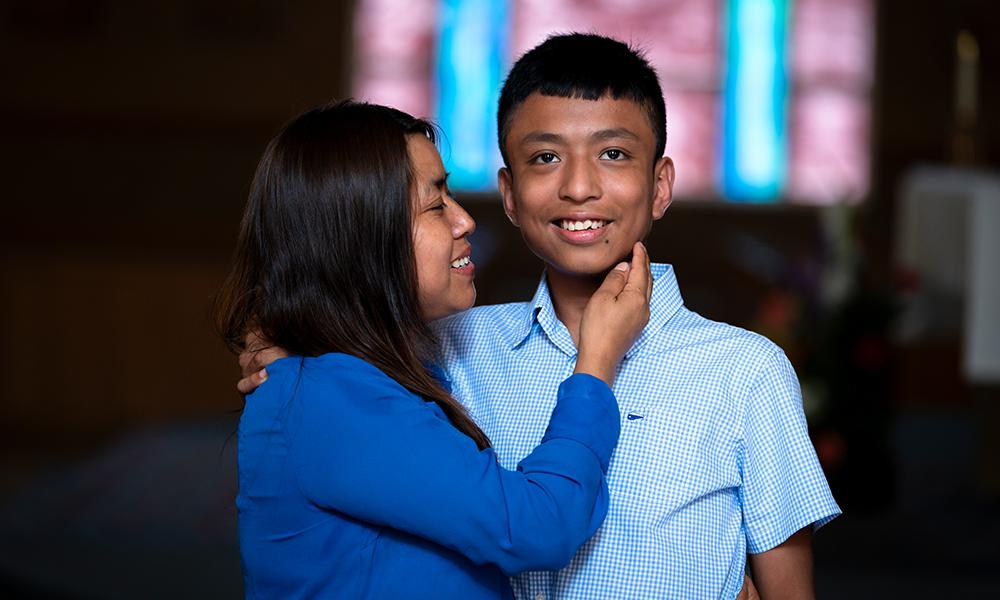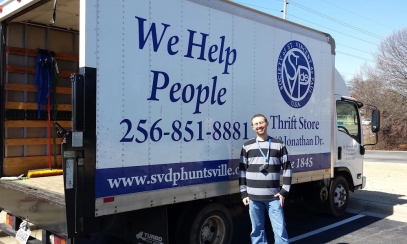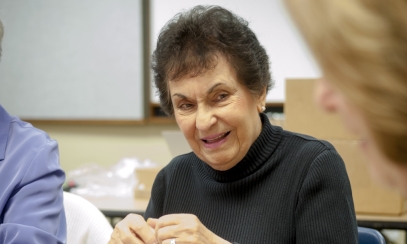
Alexiz the Miracle Child
A Story of God’s Healing Power
A Story of God’s Healing Power
“There’s no hope. Your son is going to die.”
These were the words a frightened 21-year-old Margarita Garcia heard after an accident involving her 18-month-old son, Alexiz.
Garcia’s nightmare began when she received a frantic phone call from her baby-sitter’s husband. The only information she could glean from the call was that her son had choked on a tortilla. As soon as she arrived at the hospital, she was blind-sided by a bleak diagnosis: Alexiz only had four hours left to live.
“There’s no hope. Your son is going to die.”
These were the words a frightened 21-year-old Margarita Garcia heard after an accident involving her 18-month-old son, Alexiz.
Garcia’s nightmare began when she received a frantic phone call from her baby-sitter’s husband. The only information she could glean from the call was that her son had choked on a tortilla. As soon as she arrived at the hospital, she was blind-sided by a bleak diagnosis: Alexiz only had four hours left to live.
Her many questions were met with zero answers, and although she had already been told what no mother ever wants to hear, the doctors decided to perform surgery with the hopes that Alexiz would regain consciousness.
Once word of little Alexiz’s fate spread throughout the community, friends started coming to the hospital to console and support Garcia and her husband, Romeo. One friend gave her an image of the Divino Niño, or the Divine Child Jesus, with the instruction to pray for His intercession. At that point in her life, however, she classified herself as a non-religious person, as did her husband, so the prayers were virtually nonexistent.
A week after the surgery, little Alexiz was being kept alive with a ventilator. The fact that he was not waking up led the doctors to delve deeper. The additional tests uncovered a bruise on the back, left side of Alexiz’s brain. The lodged tortilla in the youngster’s lung was only a small part of his problem. The baby-sitter failed to tell Garcia or the doctors that Alexiz had been dropped on his head, creating a blood clot on his brain. Adding to the ordeal, social workers began investigating.
Her hopelessness grew into anger: an anger directed at God. Garcia even began to reject God entirely, doubting His existence. She had come to America for the American dream. Unlike the poverty-stricken children on the streets in Mexico, she and her husband worked tirelessly to provide for their children, making sure to give Alexiz and his older brother, Kevin, what those in their homeland could only imagine. She couldn’t understand why God didn’t “take” one of the poor kids on the streets she had left behind.
No amount of clothes or shoes, however, could fix their problems now. One morning around 6 a.m., a nurse came into the hospital room with papers. They were told, “We need you to sign these papers, so we can unplug your son tomorrow because there is nothing else we can do.” They were given the name of the funeral home and instructed that once he was unplugged, he would have only hours.
Garcia’s husband was distraught, hitting walls and pleading with God to take him instead. Conversely, Garcia was on the other end of the spectrum: she was numb and detached. The fear of losing Alexiz kept her from touching him and from walking into her own home. Garcia instructed her husband to get rid of everything that reminded her of Alexiz: pictures, clothes, toys.
The night before Alexiz was to be removed from the ventilator, a friend came to the hospital for a visit. In this friend’s hand was a Bible. Her friend tried to talk about God, but Garcia got angry and said, “Take everything that has to do with God out and don’t talk to me anymore about Him!” Her friend pleaded with her, “Don’t unplug him because only God decides when life ends.” Understanding the pain, Garcia’s friend left, but she left without something: the Bible.
In her despair, Garcia picked up the Bible and started to fight with God. “If people say that You exist, why do You do these things?” Even though she was distressed, she left her heart open, wanting to hear a response. She implored, “If You truly exist, please tell me that my son will be OK …”
Having never opened a Bible in her life, she grabbed the Bible left by her friend, opened it, and started reading. “He is not alone. I am with him … have faith” were the words that leapt off the page. Immediately, tears rolled down her face and an assurance penetrated her heart. All of her fears and embarrassment vanished as she crawled into Alexiz’s crib and held her son for the first time since his injury. She promised her son from that moment onward, she would never “leave his side.” “If you’re not happy,” she told her son, “then I am not happy. We are going to live this together. You’ll never be alone.”
When her husband arrived the same evening, he was shocked to see his wife holding their son. She began telling him what had happened, but when he asked to see the Scripture verse, she was not able to find it. Surprisingly, he didn’t question her. Instead, they chose not to remove him from the ventilator. The next day, they started the process of moving him to another hospital.
The doctors resisted, showing them all the evidence that their son would never wake up or move, much less ever walk. They persevered and moved him to Children’s Hospital in Birmingham. At first, there was hope. Garcia adorned Alexiz’s room with statues of the Divino Niño, her Bible, prayer cards, and rosaries. After two weeks, however, the new doctors were suggesting a familiar and bleak choice: end Alexiz’s life or take him home with a breathing machine.
Doubt started to creep into Garcia’s mind again. She grasped her Divino Niño statue, pleading for answers. As she cried herself to sleep, she had two dreams. She first dreamt of the Baby Jesus walking through a window and telling her, “You ask Me, but you don’t ask Me with faith. If you ask Me and have faith, everything that you ask will be granted.” Her second dream involved Our Lady of Guadalupe asking for two white roses. No matter how hard Garcia tried in her dream, every flower she searched out turned “ugly.”
With her dreams still vivid in her memory, the next morning Garcia called Guadalupan Sister Obdulia Olivar. The sister didn’t skip a beat. She told the frightened mother to ask for the Blessed Mother’s intercession. “Talk to Our Lady of Guadalupe,” she instructed, “and tell her that you are suffering. Ask her to intercede by asking her Son to heal your son.” Sister also directed Garcia to go directly to the Shrine of the Most Blessed Sacrament in Hanceville after they were discharged from the hospital. “Go to the shrine, carry your son to the Divino Niño statue, kneel, and with your baby in your arms say, ‘Here is my son.’”
Garcia and her family prayed unceasingly. The rosary was prayed daily and a trip to the shrine was made weekly. Much to the surprise of his doctors, young Alexiz made progress, albeit slow. At first, there was a slight movement of a finger, but over time, he was able to move his whole hand. When his older brother would talk to him, Alexiz began smiling, eventually opening his eyes. Weaning off the breathing machine, standing, and walking were all arduous milestones. “Progress,” Garcia explains, “has always been on His time.”
Now that Alexiz is 15, “He likes to play,” says Garcia with a smile. “He likes to dance, and he is able to communicate.” While he struggles with some developmental delays, his wide and ever-present smile is a testament to God’s healing power.
The family’s numerous hardships have not jaded them. Garcia contends their journey has been a gift — a gift which they joyfully share. The family uses their blessings and miracle child to seek out families separated from the Church. Each year, the family goes to these homes, praying the novena to the Divino Niño and sharing their testimony. “I always remind my children and my husband,” she says, “to be grateful to God for what has happened in our lives because we know we have a purpose.” Little Alexiz has helped his family fulfill the call we as Christians are called to answer. In the wisdom borne of suffering, Garcia declares, “Our purpose is to look for souls away from God and bring them to Baby Jesus, our Savior.”



